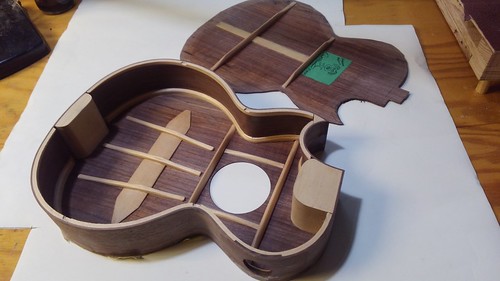tonyturley
Well-known member
- Joined
- Aug 29, 2018
- Messages
- 780
- Reaction score
- 374
Just to show things don't always go as planned in the shop, I just came in from cleaning the garage after routing out the set of spalted Sycamore bindings I had installed on my kiku body over the last 2 days. Spalted Sycamore has to be the most unforgiving wood I’ve ever tried to bend, even worse than curly Maple. The stuff split if I looked at it the wrong way, and the fibers also seemed to tear when I was scraping the dried bindings. I tired bending the strips both wet and dry, and had my LMI bending pipe on high by the time I was done. Despite the cracks, I still went through with the binding job, taping and clamping the cracked areas tightly as the glue set. The bindings were nice looking after scraping and sanding – except for the places where the cracks had been glued. Those stood out prominently in my eyes, so off they came.
I don’t know if the fungus that caused the spalting caused the Sycamore to break so easily, but I have some un-spalted Sycamore on hand, so I think I’ll cut the new binding strips from that. But not today or tomorrow. I think I'm going to take a day or two away from the sawdust.
I don’t know if the fungus that caused the spalting caused the Sycamore to break so easily, but I have some un-spalted Sycamore on hand, so I think I’ll cut the new binding strips from that. But not today or tomorrow. I think I'm going to take a day or two away from the sawdust.










